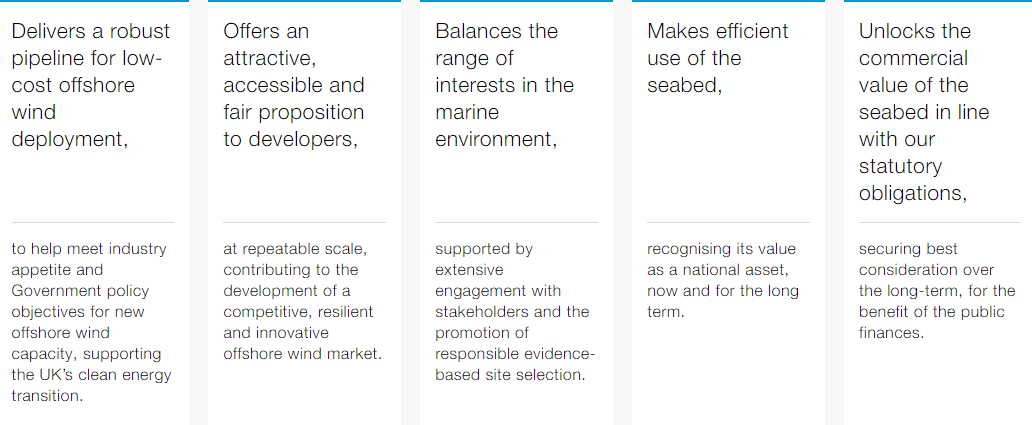
OffshoreStakeHolder@thecrownestate.co.uk
OffshoreStakeHolder@thecrownestate.co.uk

Driving a net zero clean energy future
Offshore Wind Leasing Round 4 creates the opportunity for c.8GW of new offshore wind projects in the waters around England and Wales by the end of the decade. That’s enough to power more than seven million homes and deliver a step-change in the UK’s journey to net zero by 2050.
Round 4 further strengthens the UK’s world leading offshore wind sector, creating jobs and investment, and delivering green, reliable, affordable energy to millions more homes. It’s part of our commitment to supporting the UK’s low carbon future while ensuring we maintain our healthy, biodiverse seas.
The new projects join a strong pipeline of UK offshore windfarms already in operation, construction and planning, and will help put the UK on track to meet the government target for 40GW of offshore wind capacity by 2030.
Round 4 is defined by five objectives – which strike a careful balance between meeting the needs of the nation for clean, reliable, low-cost power, while protecting our healthy seas and the wider natural environment.

The Offshore Wind Leasing Round 4 Agreements for Lease signing concluded in January 2023, meaning six new projects could begin to generate renewable electricity by the end of the decade.
Three of the six projects are located off the North Wales, Cumbria and Lancashire coast, and three are located in the North Sea off the Yorkshire and Lincolnshire coast.

Following our leasing process, successful developers will take their projects through a number of important licensing and consenting processes.
Development and Consenting: estimated five years
Round 4 projects will need to apply for a Development Consent Order (DCO) from the Secretary of State for Business, Energy & Industrial Strategy via the Planning Inspectorate. Developers will also require consent to construct a cable connection onshore, and an agreement to connect to the National Electricity Transmission System.
Procurement and Contracts for Difference (CFDs): estimated two years
Developers take part in Contract for Difference (CfD) auctions to bid for support to build and run the wind farm. They also make their final investment decision.
Construction: estimated three years
Energy regulator Ofgem (The Office for Gas and Electricity Markets) also runs a separate competitive tender process to operate the offshore transmission assets, which are assigned to the successful bidder once the windfarm is constructed and commissioned.

Please email:

OffshoreStakeHolder@thecrownestate.co.uk